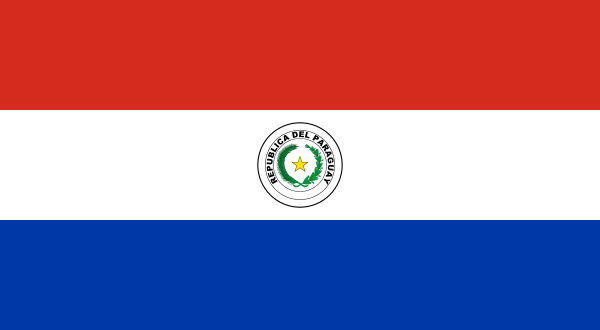Flag Description:
The flag of Eswatini features a captivating design comprising five horizontal bands of vibrant colors that flow from top to bottom: blue, yellow, red, green, and blue. Comprising a triad of blue bands, a pair of yellow bands, one red band, and a concluding green band, this flag is both visually compelling and immediately recognizable.
Meaningful Color Palette:
Each hue within the Eswatini flag holds a distinct significance that eloquently encapsulates the nation's historical narrative, cultural tapestry, and future aspirations:
- Blue (Top and Bottom Bands): The dual blue bands embody the ideals of tranquility and stability. Serving as a representation of harmonious coexistence among the diverse ethnic groups and communities that constitute the nation, blue also draws an association with the cloudless skies that grace the land, instilling an aura of hope and optimism for the days ahead.
- Yellow (Second and Fourth Bands): The twin yellow bands serve as a vivid emblem of Eswatini's ample natural resources and prosperity. They mirror the land's abundance, encompassing minerals, agriculture, and other invaluable assets. Additionally, the color yellow reverberates with the vivacious cultural heritage that distinguishes Eswatini, spotlighting the multifaceted traditions and practices that contribute to the nation's distinctive identity.
- Red (Third Band): The solitary red band carries profound historical resonance, commemorating the trials and sacrifices borne by the Eswatini populace throughout its chronicles. This crimson stripe serves as a tribute to the nation's unwavering resilience, unyielding determination, and indomitable courage in confronting adversities and challenges. It stands as a potent symbol of the battles fought for liberation and underscores the persistent commitment to advancement and progress.
- Green (Fifth Band): The final green band is a representation of Eswatini's fecund terrain and its inherent natural beauty. It encapsulates the vital significance of agriculture, forestry, and environmental stewardship in nurturing the nation's prosperity and well-being. Furthermore, the color green evokes notions of growth, rejuvenation, and a steadfast dedication to safeguarding the country's natural resources for generations to come.
Historical Context:
The Eswatini flag was officially embraced on October 6, 1968, marking the culmination of the nation's emancipation from British colonial dominion. Embedded within the flag's design and symbolism is a profound connection to Eswatini's historical trajectory and its odyssey towards self-determination. The pivotal influence of King Sobhuza II, reigning during Eswatini's transition to autonomy, is palpable in the flag's conception and meaning.
The flag's quintet of bands is often associated with the five decades encompassing King Sobhuza II's reign at that juncture, paying homage to his leadership and underscoring the continuity of the Swazi monarchy. This emblematic representation epitomizes the nation's sense of pride, its distinctive identity, and the ambitions it harbored as it embarked upon a novel epoch of sovereignty.
In Summation:
The Eswatini national flag stands as an eloquent visual testament to the tapestry of Eswatini's history, its cherished values, and its vibrant cultural heritage. Characterized by a unique configuration of colors, each imbued with profound meanings, the flag serves as a narrative of harmony, prosperity, endurance, and ecological stewardship. It encapsulates the quintessence of Eswatini's identity as an autonomous African nation, resplendent with its past, its present, and its dreams for the future.
Last Updated on: July 08, 2025
